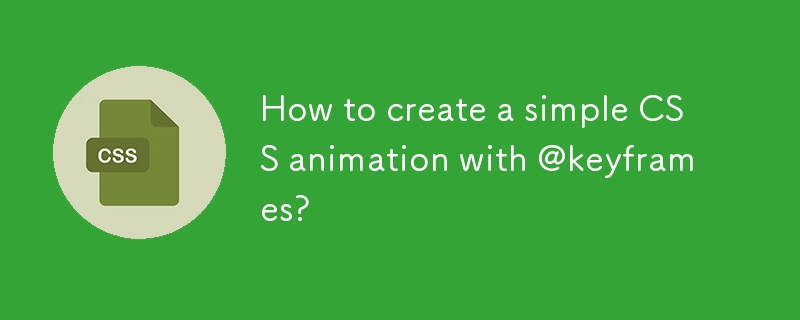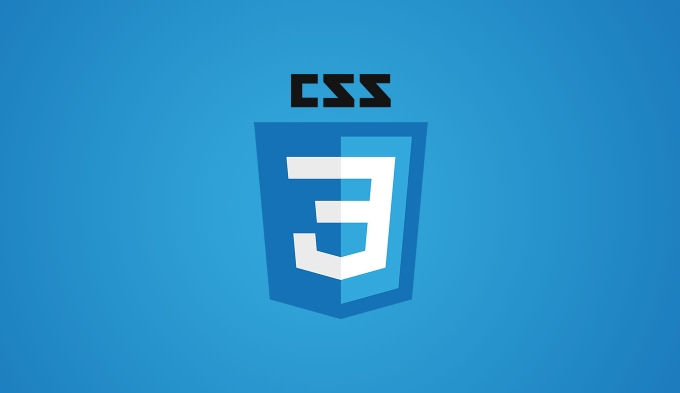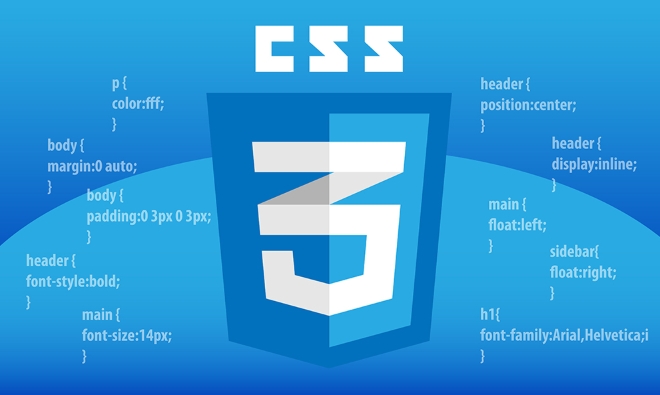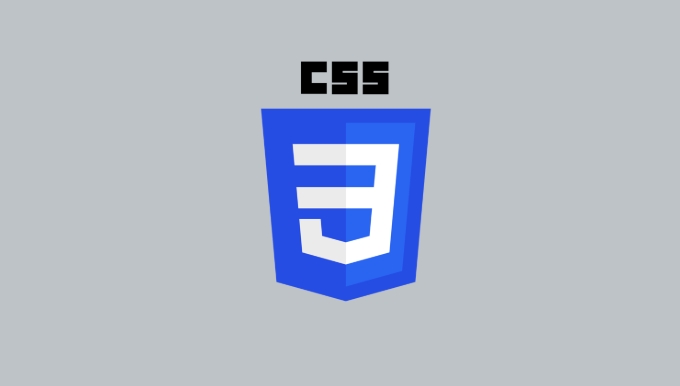Use @keyframes in CSS to achieve custom animation effects. The basic steps are: 1. Define the @keyframes animation, specify the animation name and keyframe style; 2. Bind the animation to the target element through the animation attribute, and set parameters such as duration, easing function, and playback times; 3. Pay attention to consistent naming, reasonable use of from/to to replace 0%/100%, add browser prefix, optimize performance, and test performance on different devices, and you can achieve common animation effects such as button hover and load indicator.

Want to use CSS to create a simple animation effect? @keyframes is the core tool for implementing custom animations. As long as you master a few basic structures, you can create common effects such as button hover animation and load indicators.

What is @keyframes?
@keyframes is a rule used in CSS to define animation keyframes. You can understand it as a "script" that tells the browser what the element should look like at a certain point in time. For example, it is transparent at the beginning, enlarge the middle a little, and finally return to normal.
When using it, you need to name the animation and then apply it to an element through animation attribute.

For example:
@keyframes example {
0% { opacity: 0; transform: scale(0.8); }
50% { opacity: 0.5; transform: scale(1.2); }
100% { opacity: 1; transform: scale(1); }
} The above code defines an animation called example . During the entire animation process, the elements will transition from translucent and shrinking state to zoom in and then return to normal.

How to add animation to elements?
After writing @keyframes , the next step is to bind this animation to specific elements. A common way is to add animation attributes to the selector.
Continuing with the above example:
.my-element {
animation: example 2s ease-in-out infinite;
}This line of code means:
- Use an animation called
example - Duration is 2 seconds
- Use
ease-in-outeasing function (start and ending are slow, middle is fast) -
infinitemeans infinite loop playback
You can also disassemble and write it into multiple attributes, which is clearer:
.my-element {
animation-name: example;
animation-duration: 2s;
animation-timing-function: ease-in-out;
animation-iteration-count: infinite;
}Common values include:
-
animation-direction: alternate: let the animation play back and forth -
animation-delay: 1s: Playback starts after 1 second delay -
animation-fill-mode: forwards: Keep the last frame style after the animation is over
Practical tips and precautions
If you don’t pay attention to some details, the animation may stop moving or perform abnormally. Here are some practical suggestions:
- The naming must be unified : The name defined by
@keyframesmust be consistent withanimation-name, otherwise the animation will not take effect. - The percentage is written in a flexible way : in addition to
0%and100%, you can also usefromandtoto to represent the starting point and end point. - Don't miss browser prefixes : Although most modern browsers support unprefixed versions, if you want to be compatible with old devices, you can add prefixes such as
-webkit-. - Performance considerations : Frequent re-arrangement or the use of large amounts of animations will affect the performance of the page. Try to use performance-friendly attributes such as
transformandopacityto animation. - Test behavior on different devices : Mobile and desktop sometimes differ, especially when autoplay and trigger animations.
Basically that's it
In fact, it is not difficult to write a simple CSS animation. The core is to define the keyframe first and then apply it to the target element. After you are proficient in this, you can combine multiple animations, control the playback direction, delay time, etc. to create richer visual effects.
The above is the detailed content of How to create a simple CSS animation with @keyframes?. For more information, please follow other related articles on the PHP Chinese website!

Hot AI Tools

Undress AI Tool
Undress images for free

Undresser.AI Undress
AI-powered app for creating realistic nude photos

AI Clothes Remover
Online AI tool for removing clothes from photos.

Clothoff.io
AI clothes remover

Video Face Swap
Swap faces in any video effortlessly with our completely free AI face swap tool!

Hot Article

Hot Tools

Notepad++7.3.1
Easy-to-use and free code editor

SublimeText3 Chinese version
Chinese version, very easy to use

Zend Studio 13.0.1
Powerful PHP integrated development environment

Dreamweaver CS6
Visual web development tools

SublimeText3 Mac version
God-level code editing software (SublimeText3)

Hot Topics
 CSS tutorial for creating loading spinners and animations
Jul 07, 2025 am 12:07 AM
CSS tutorial for creating loading spinners and animations
Jul 07, 2025 am 12:07 AM
There are three ways to create a CSS loading rotator: 1. Use the basic rotator of borders to achieve simple animation through HTML and CSS; 2. Use a custom rotator of multiple points to achieve the jump effect through different delay times; 3. Add a rotator in the button and switch classes through JavaScript to display the loading status. Each approach emphasizes the importance of design details such as color, size, accessibility and performance optimization to enhance the user experience.
 Addressing CSS Browser Compatibility issues and prefixes
Jul 07, 2025 am 01:44 AM
Addressing CSS Browser Compatibility issues and prefixes
Jul 07, 2025 am 01:44 AM
To deal with CSS browser compatibility and prefix issues, you need to understand the differences in browser support and use vendor prefixes reasonably. 1. Understand common problems such as Flexbox and Grid support, position:sticky invalid, and animation performance is different; 2. Check CanIuse confirmation feature support status; 3. Correctly use -webkit-, -moz-, -ms-, -o- and other manufacturer prefixes; 4. It is recommended to use Autoprefixer to automatically add prefixes; 5. Install PostCSS and configure browserslist to specify the target browser; 6. Automatically handle compatibility during construction; 7. Modernizr detection features can be used for old projects; 8. No need to pursue consistency of all browsers,
 Creating custom shapes with css clip-path
Jul 09, 2025 am 01:29 AM
Creating custom shapes with css clip-path
Jul 09, 2025 am 01:29 AM
Use the clip-path attribute of CSS to crop elements into custom shapes, such as triangles, circular notches, polygons, etc., without relying on pictures or SVGs. Its advantages include: 1. Supports a variety of basic shapes such as circle, ellipse, polygon, etc.; 2. Responsive adjustment and adaptable to mobile terminals; 3. Easy to animation, and can be combined with hover or JavaScript to achieve dynamic effects; 4. It does not affect the layout flow, and only crops the display area. Common usages are such as circular clip-path:circle (50pxatcenter) and triangle clip-path:polygon (50%0%, 100 0%, 0 0%). Notice
 What is the difference between display: inline, display: block, and display: inline-block?
Jul 11, 2025 am 03:25 AM
What is the difference between display: inline, display: block, and display: inline-block?
Jul 11, 2025 am 03:25 AM
Themaindifferencesbetweendisplay:inline,block,andinline-blockinHTML/CSSarelayoutbehavior,spaceusage,andstylingcontrol.1.Inlineelementsflowwithtext,don’tstartonnewlines,ignorewidth/height,andonlyapplyhorizontalpadding/margins—idealforinlinetextstyling
 Styling visited links differently with CSS
Jul 11, 2025 am 03:26 AM
Styling visited links differently with CSS
Jul 11, 2025 am 03:26 AM
Setting the style of links you have visited can improve the user experience, especially in content-intensive websites to help users navigate better. 1. Use CSS's: visited pseudo-class to define the style of the visited link, such as color changes; 2. Note that the browser only allows modification of some attributes due to privacy restrictions; 3. The color selection should be coordinated with the overall style to avoid abruptness; 4. The mobile terminal may not display this effect, and it is recommended to combine it with other visual prompts such as icon auxiliary logos.
 What is the CSS Painting API?
Jul 04, 2025 am 02:16 AM
What is the CSS Painting API?
Jul 04, 2025 am 02:16 AM
TheCSSPaintingAPIenablesdynamicimagegenerationinCSSusingJavaScript.1.DeveloperscreateaPaintWorkletclasswithapaint()method.2.TheyregisteritviaregisterPaint().3.ThecustompaintfunctionisthenusedinCSSpropertieslikebackground-image.Thisallowsfordynamicvis
 How to create responsive images using CSS?
Jul 15, 2025 am 01:10 AM
How to create responsive images using CSS?
Jul 15, 2025 am 01:10 AM
To create responsive images using CSS, it can be mainly achieved through the following methods: 1. Use max-width:100% and height:auto to allow the image to adapt to the container width while maintaining the proportion; 2. Use HTML's srcset and sizes attributes to intelligently load the image sources adapted to different screens; 3. Use object-fit and object-position to control image cropping and focus display. Together, these methods ensure that the images are presented clearly and beautifully on different devices.
 What are common CSS browser inconsistencies?
Jul 26, 2025 am 07:04 AM
What are common CSS browser inconsistencies?
Jul 26, 2025 am 07:04 AM
Different browsers have differences in CSS parsing, resulting in inconsistent display effects, mainly including the default style difference, box model calculation method, Flexbox and Grid layout support level, and inconsistent behavior of certain CSS attributes. 1. The default style processing is inconsistent. The solution is to use CSSReset or Normalize.css to unify the initial style; 2. The box model calculation method of the old version of IE is different. It is recommended to use box-sizing:border-box in a unified manner; 3. Flexbox and Grid perform differently in edge cases or in old versions. More tests and use Autoprefixer; 4. Some CSS attribute behaviors are inconsistent. CanIuse must be consulted and downgraded.






